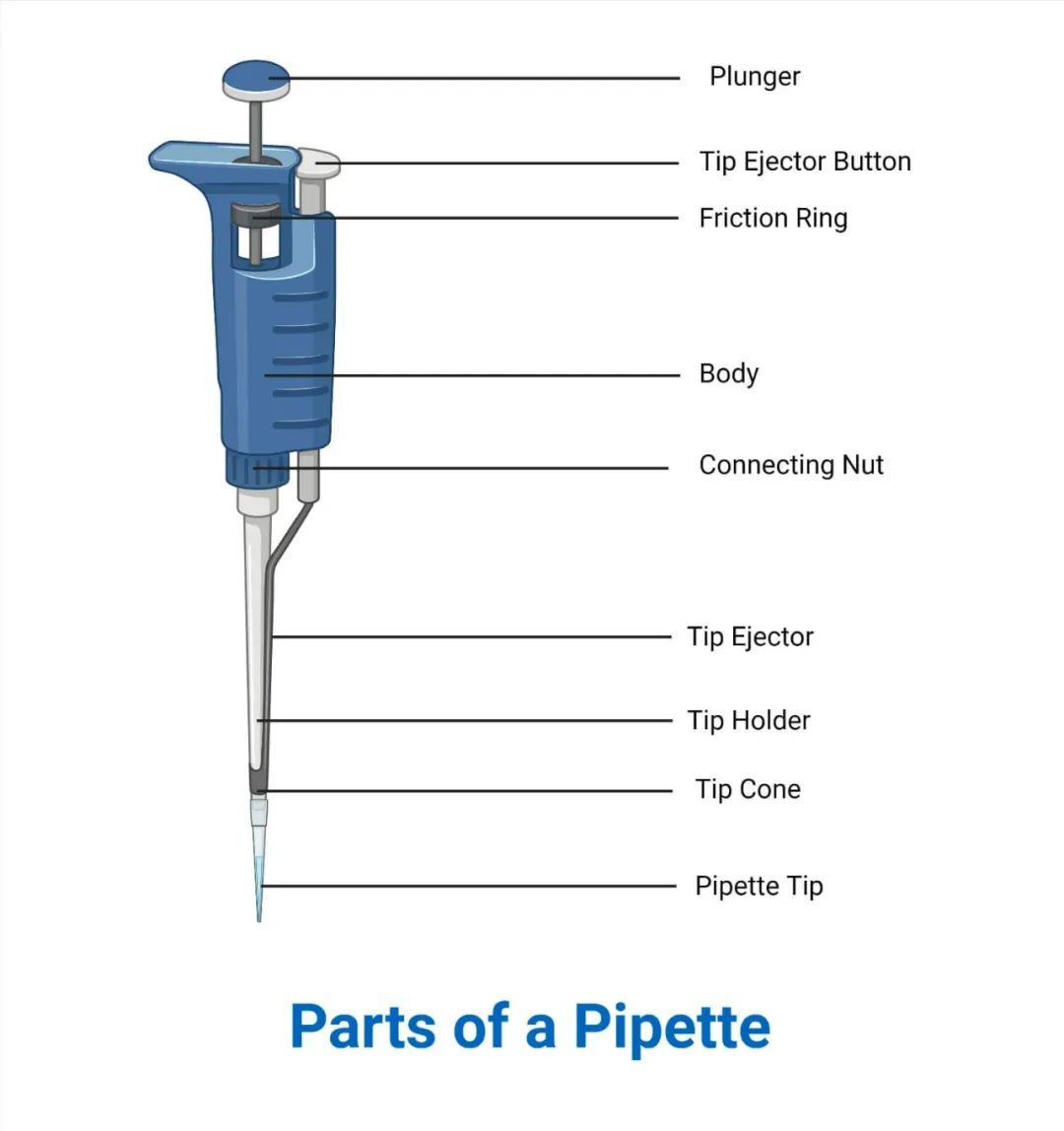Universal Pipette is a laboratory device used to measure or dispense small amounts of liquid in volumes of milliliters (mL) or microliters (μL).
The name "pipette" is derived from the French word "pipette," meaning "little pipe." Universal Pipettes come in three basic types: glass, plastic, and electric. Glass pipettes are made from borosilicate glass, plastic pipettes from polyethylene terephthalate (PET), and microprocessor-controlled electronic pipettes. Plastic and glass pipettes are typically used to measure volumes less than 1 milliliter (mL).
The minimum volume measured by an electronic pipette is 0.1 microliters (μL). Universal Pipettes usually start from 1 milliliter, whereas the measurement range of micro pipettes is from 1 to 1000 microliters. They are widely used in chemical, molecular biology (biotechnology), medical research, general laboratory experiments in the field of natural sciences, food and chemical analysis, food safety inspections, and clinical testing procedures.
Universal Pipette operates mainly on two mechanisms: air displacement and positive displacement. Each type of pipette has a piston that moves within a capillary or cylinder. In an air displacement pipette, a certain amount of air is left between the piston and the liquid. In a volumetric pipette, the piston comes into direct contact with the fluid.
Air displacement: The expansion and contraction of a spring mechanism allow the piston to aspirate and dispense liquid. As the piston pushes, some air is expelled, and the liquid is drawn in by atmospheric pressure, then the air is pushed out to release the liquid. Therefore, the speed and force of pipetting can be controlled when using Universal Pipettes, as they operate based on the expansion and contraction characteristics of the spring. It is mainly used in pipettes.
Volumetric pipettes: Repeat pipettes or specialized volumetric pipettes often operate on the volumetric principle. Direct contact with the liquid is achieved via a disposable piston moving within the tip. The sample is then aspirated into the tip by the upward movement of the piston (without an air cushion, just like with air displacement pipettes). With the piston descending, the selected volume is dispensed.

Plunger: Used to aspirate and dispense the desired volume of liquid.
Ejector Button: It lowers the metal rod to eject the pipette tip.
Volume Adjustment Knob: The volume adjustment knob can be rotated to set the volume of the sample to be transferred, increasing or decreasing the concentration. It cannot be rotated in fixed-volume pipettes.
Volume Window: Displays the set volume, and the displayed value position depends on the size of the pipette.
Shaft: It is a tubular structure filled with air in an air displacement pipette. When the piston is pressed down, some air is released from the shaft, aiding in liquid aspiration. Conversely, releasing the piston helps dispense the liquid while refilling the shaft with air.
Tip Cone: This is the area where the pipette tip connects.
Universal Pipette Tips: It is a device made of polypropylene or plastic, molded and in contact with the liquid.
